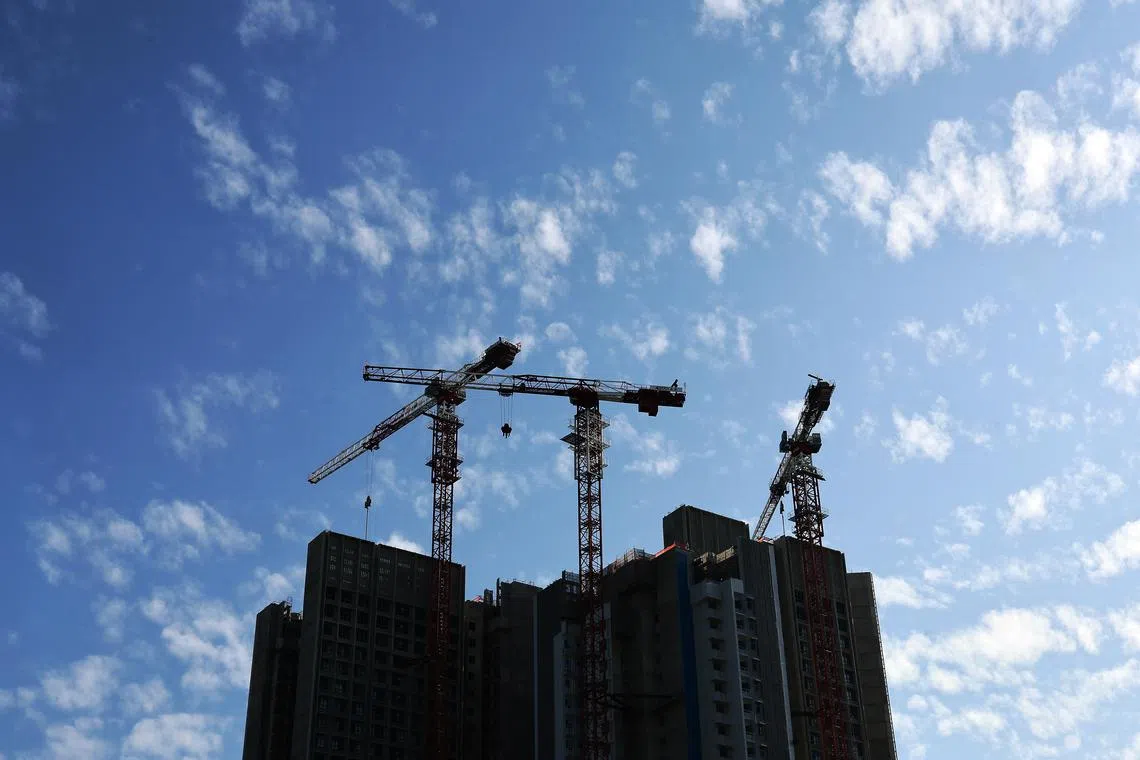askST: How will the new BTO classification affect home buyers?
Sign up now: Get ST's newsletters delivered to your inbox

While Standard flats retain the current five-year minimum occupation period, Plus and Prime flats have a MOP of 10 years.
ST PHOTO: KELVIN CHNG
Follow topic:
SINGAPORE - Home buyers with an eye on next week’s Build-To-Order (BTO) sales exercise
This new model
The Straits Times answers some questions about how the new system will affect home buyers:
1. How are flats categorised under the new model? What’s different about it?
From the BTO sales exercise next week, flats will be placed in three groups – Standard, Plus or Prime.
Standard flats will form the bulk of public housing supply and be built islandwide. They may have one or two good attributes, such as being close to the MRT station or amenities.
Plus flats are in better locations within each region across Singapore, such as those that are closer to MRT stations and town centres.
Prime flats are in the choicest locations; they might be closer to the city centre or in surrounding towns. While they also come with the biggest subsidies, buyers of such flats face the tightest resale conditions.
Some Plus and Prime flats may also come with unique features, such as waterfront views.
Previously, BTO flats were classified under mature or non-mature estates. Mature estates were developed earlier and in better locations, while non-mature estates were in newer housing towns that were typically less than 20 years old.
2. What conditions do flats in each category come with?
The home buyers’ ability to sell or rent out their BTO flats will vary according to the group that their flats are classified under.
Those who buy Plus and Prime units must live in them for 10 years before they can sell their unit on the open market, up from the five-year minimum occupation period (MOP) of most flats now. In contrast, Standard flats retain the current five-year MOP.
Owners of Plus and Prime flats must return additional subsidies to the Housing Board when they sell their flats on the resale market for the first time. Standard flats are not subject to this policy, which is known as a subsidy clawback.
Prime flats will be subject to a bigger subsidy clawback than Plus flats – specifics of this will be announced when the BTO flats are launched.
When it comes to rentals, Plus and Prime flat owners are not allowed to lease out their entire flat, whereas Standard flat owners can do so after their five-year MOP.
Flat owners of all categories can lease out spare rooms.
3. What would happen when flats under the new system hit the resale market?
While there is no income ceiling for resale buyers on Standard flats, only families and singles who earn $14,000 or less a month can buy Plus flats on the resale market.
For Prime flats, the income cap is $14,000 for families and $7,000 for singles.
There will also be a 30-month wait-out period for private property owners who wish to buy a resale Prime or Plus flat, compared with 15 months for a resale Standard flat.
4. Where are flats being launched in October?
At next week’s sales exercise, 8,573 flats will be offered across 15 projects under this new classification model for BTO flats.
There will be seven Standard projects in Bukit Batok, Jurong West, Pasir Ris, Sengkang and Woodlands.
Another seven projects are in the Plus category. These are located in Ang Mo Kio, Bedok, Kallang/Whampoa, and Geylang.
Only one Prime project – in Kallang/Whampoa – will be launched next week.
5. How will the new classification model affect home buyers who are single?
Singles aged 35 and older buying a flat for the first time can apply for two-room flexi flats in any of the three categories. They can also buy resale flats in the Standard and Plus groups.
Previously, singles could buy new two-room flexi flats only in non-mature estates. They were also barred from buying new prime location public housing (PLH) flats directly from HDB and from the PLH resale market.
6. How will the new model affect flat allocation quotas, ballot chances and housing priority schemes?
Conditions that applied to non-mature estates in the past will largely apply to Standard flats, while those that applied to only PLH flats will now apply only to Prime flats.
For instance, at least 85 per cent of three-room Standard flats will be set aside for families applying for a flat for the first time, a quota that applied to non-mature estates.

